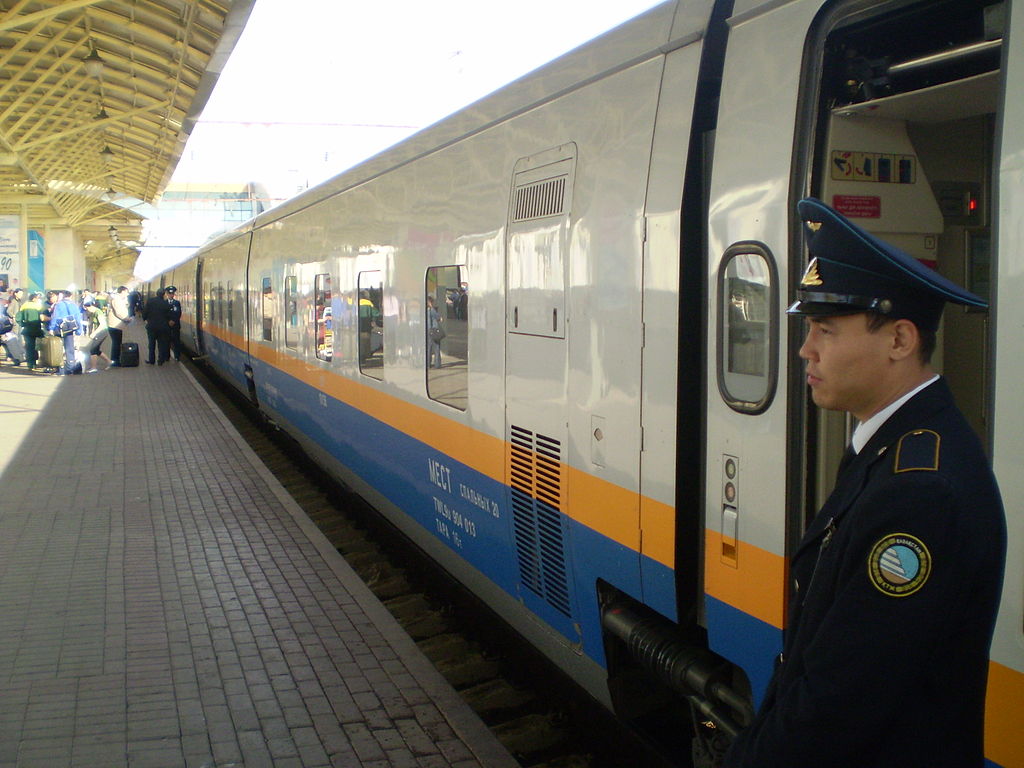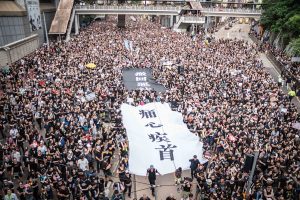by Tristan Kenderdine
China’s bid to expand its economic presence in Eurasia – embodied in its “Belt and Road” initiative – requires a major upgrade of railway capacity, especially in Central Asia. Planning and implementing the upgrade entails significant challenges involving coordination, both domestically among various Chinese state agencies and entities, and internationally between China and Central Asian states.
The railway component of the Belt and Road is ambitious, with an abundance of moving parts. The concept relies on three trunk lines running through Central Asia. West Passage 1 exits from Xinjiang’s Alashankou (Khorgos), runs to Kazakhstan and moves on to a junction with Russia’s Trans-Siberian Railway. From there, the route can extend to the European Union via Belarus.
West Passage 2 exits Xinjiang’s Alashankou (Khorgos) and, via Kazakhstan, connects to Turkmenistan, Iran, Turkey and other countries, again with possible access to Europe; a branch also connects to the Caucasus via Kazakhstan and ferries across the Caspian Sea. Meanwhile, West Passage 3 connects China’s western city of Kashgar to Osh, in the Kyrgyz sector of the Ferghana Valley, via the Irkeshtam Pass. From there, the railway heads to Uzbekistan, Turkmenistan, Iran, Turkey, and beyond.
Another trunk line, not involving Central Asian states, is called East Passage 1. It connects the Inner Mongolian town of Erenhot to the Trans-Siberian railway, and from there to Europe.
(View charts of both existing and planned rail routes and border crossings).
So far, China’s efforts to address the coordination challenges have been hampered by a lack of a nuanced approach that accounts for the social and cultural sensitivities of its Central Asian neighbors.
In their dealings with Central Asian leaders, Chinese authorities have framed the Belt and Road in purely pragmatic, economic terms, calling it a “South-South” development policy that will produce a “win-win” economic situation for all involved. Many independent observers believe this appeal to pragmatism misses the point.
Politically, Central Asian states are not all “mini-Chinas” with centralized political systems. The political complexion of Central Asia involves a wide array of governance structures, varying core-periphery power relations with Moscow, and, in some states, complex relations between central and regional authorities.
Meanwhile in the socio-economic sphere, officials in Beijing do not seem to appreciate concerns among Central Asian leaders, who believe China’s massive economy is capable of overwhelming their own economies, and have a transformational effect on their societies.
Internally, three corridors are being developed within China to funnel trade outward via rail. The West corridor comprises the northwest, southwest, central and southern regions, utilizing the Lanzhou-Urumqi railway network. The North corridor comprises the north, central and southern regions of China and utilizes to south-north Beijing-Guangzhou rail network. The East corridor comprises the northeast, east, central and other regions, utilizing the Beijing-Shanghai and Harbin-Dalian railway clusters.
A major component of China’s approach to address logistical dilemmas is a policy dubbed “international production capacity cooperation.” The idea is to reduce domestic overcapacity and disperse Chinese production, and, in the process, reduce railway choke points that could hamper the efficient distribution of exports produced by Chinese firms.
Under the policy, Chinese firms are being encouraged to “go global” and move plants abroad. State-backed financial institutions are on notice to help whole domestic industry chains move offshore and to provide infrastructure investment in host countries that facilitates both the transit of exports, and the development of industrial capacity in those host countries.
Primary state responsibility for promoting the offshoring initiative will fall on provincial-level officials, backed by central planners. Chinese financial institutions are also creating financing mechanisms that will be available to provincial governments, which have their own Belt and Road policies that are supposed to be tailored to play to geographic, industrial-infrastructure and competitive-advantage strengths.
This strategy carries with it a couple of big risks. The biggest is perhaps a lack of institutional experience at the lower levels of China’s governing structure in dealing with counterparts abroad – something that could easily create a drag on the offshoring effort. If it is not handled deftly, China could end up exporting its problem of industrial overcapacity.
For China to keep the Belt and Road railway component on track, it needs provincial officials to be up to the task of negotiating intricate international deals, and it also needs the domestic financial system to hold steady. Chinese officials additionally should tweak their approach toward Central Asian states, acknowledging the diversity of the region and engaging neighbors in a way that is more culturally tactful.
Reprinted, with permission, from EurasiaNet.






The biggest, most complex economic development project in the history of humankind can be expected to involve some of the biggest, most complex “challenges.” It’s bound to be a steep learning curve for every level of the Chinese administration involved in it, as it probably requires a certain kind of diplomatic skill that China has yet to perfect.
If the North American experience is any indication, economic projects have a way of trampling over cultural and social sensitivities — especially when those projects involve a particularly ruthless form of capitalism and a regional hegemon who simply assumes that what’s good for the lord is good for the serfs.
The sheer size of the OBOR project means that it’s moving across Asia like a giant unstoppable steamroller. Central Asian leaders can see it coming and it scares the hell out of them. They can either see it as a kind of force of nature that they can do little about, or they can understand it as an opportunity ripe for negotiation. Either way, the choice is China’s: it can treat the central Asian nations as mere vassal states whose cultural and social interests are a speed bump and keep steamrollering along — which is just asking for more trouble. Or it can engage those leaders as the crucial partners they are with important contributions to make.